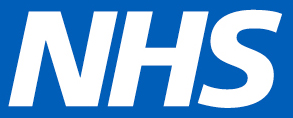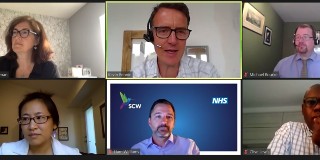Bristol, North Somerset, and Somerset (BNSSG) Integrated Care System (ICS) was selected to take part in the Elective Accelerator programme, a national initiative launched in May 2021. The objective of the Accelerator programme was to reduce elective waiting lists by evaluating and implementing novel ways of working to increase the number of elective operations undertaken.
As a result of receiving Accelerator funding, University Hospitals Bristol and Weston (UHBW) was able to initiate more than 70 projects across its six divisions. We supported the programme by carrying out a rapid progress review, making recommendations to improve system-wide delivery, and providing targeted support to mobilise or drive the delivery of critical projects.
Context
In May 2021, the NHS announced a £160 million initiative to tackle waiting lists. The Elective Accelerator programme aimed to support recovery by trialling new ways of working in twelve ICS and five specialist children’s hospitals.
Projects were a mix of equipment purchases, establishing new ways of working, and funding additional clinic sessions to reduce waiting list numbers, particularly focused on patients waiting longer than 104 weeks.
BNSSG ICS received more than £20m in capital and revenue funding, which they allocated across more than a hundred improvement schemes covering both University Hospitals Bristol and Weston (UHBW) and North Bristol Trust (NBT).
SCW was asked by UHBW to support a rapid review of their funded initiatives to provide assurance on progress and make recommendations to improve delivery. Based on the findings of the review, we were subsequently retained to support the delivery of critical projects. For example, Bristol Eye Hospital’s project to relocate their Ophthalmology Diagnostic Assessment Hub.
Challenge
UHBW needed to understand how their schemes were working and wanted to carry out a rapid ‘health check’ on all of the Accelerator schemes they had funded. The intention was not to quantify the benefit that each scheme had delivered or provide a count of increased elective activity, but to derive an indication from project teams as to whether the anticipated benefits were being realised as planned, or whether they were delayed or diminished compared to baseline assumptions.
Solution
We rapidly developed and deployed a light-touch assessment framework that would establish whether project delivery, benefits and costs were on track. After developing the assessment criteria, we completed a desktop review of business cases and highlight reports to assess the schemes. This was followed up with interviews with divisional staff and project teams leading delivery.
The resulting analysis informed Trust decision-makers on whether to continue delivery, provide additional support to drive activity, or reassign funding to other operational and effective interventions.
The process and outputs we created were later extended to include North Bristol NHS Trust (NBT) initiatives, plus a small number of system-wide collaborative programmes. The final report was reviewed by the ICS elective recovery leadership team to inform further activity, investment, and prioritisation in the second half of the financial year.
Major projects reviewed included:
- Cardiology day-case unit expansion: additional 50 cases per month planned
- Establishment of a system-wide virtual ward
- Echo insourcing: increasing activity levels by 480 patients over 3 months
- Cardiology pacing room
- Modular theatres: enabling 6 additional cases per day, with the potential to provide a further eight 3-hour sessions per week
- Brunel beds: additional rehabilitation beds to support discharge fully utilised, with the potential to extend to other pathways
- Radiology CT scanner
Learning review
During the health check, the ICS requested we undertake a learning review of Accelerator programmes delivered in three other ICSs. The aim was to identify successful interventions delivered elsewhere that would potentially benefit the Trusts and patients in BNSSG. We interviewed programme teams in three other ICS and completed a literature review of all the recovery schemes and outcomes documented in the national repository. As a result, the Trusts were able to pinpoint and explore innovative approaches that had not initially been in the scope of the BNSSG programme.
Extending the scope of our support
Based on the emerging findings of the health check review, the Trusts asked us to support delivery of key programmes within the Accelerator portfolio, including:
- Implementing an Ophthalmology Diagnostic Assessment Hub to increase screening capacity for glaucoma and medical retinopathy patients, by relocating to a temporary facility pending redevelopment of their chosen long-term site.
- Creating a programme reporting structure and workbook for Urgent Care services. Supporting the Deputy COO (Urgent Care) to draft project documentation covering all delivery activities and provide coherence and structure to the programme.
- Benefits mapping for Healthier Together @ Home, a project to initiate virtual care for patients in their own homes. Our role was to map the expected benefits of the programme and provide a mechanism for tracking them. This involved holding workshops with clinical and delivery teams to develop logic models that linked activities, outcomes, and benefits, and producing a Benefits Map and a Benefits Realisation Plan.
Once this initial tranche of work was completed, SCW was asked to support the following projects:
- Bristol Eye Hospital (BEH): to develop options appraisals and business cases for several recovery initiatives which included:
- Providing broadband connections for a Mobile Retinal Treatment Unit, to replace outdated mobile roaming connections and stabilise network connectivity. The result was to increase activity levels, avoid clinic cancellations, and enable a more rapid and regular upload of diagnostic images for consultant review.
- Re-purposing the Trust Sterile Services Department. This section of the BEH close to the main theatres was currently unused for clinical purposes. The options appraisal considered several alternative uses for the space including expanding the patient waiting area to improve flow, setting up and additional theatre, providing a paediatric recovery area, or creating a multi-purpose space.
- Procurement of slit lamps to streamline clinical activity and manage increasing demand for cataract assessment and treatment.
- Critical Care Outreach Service. Setting up a critical care outreach team within UHBW to improve access to critical care services and facilitate more efficient transitions for patients into and out of the Intensive Care Unit. We supported project mobilisation and provided advice on benefits realisation.
Impact
The support we provided enabled BNSSG to focus their Accelerator programme and funding on the most impactful initiatives and identified improvement opportunities for the system, including the development of a multi-skilled programme support hub that would provide the ICS with a dynamic foundation for further delivery through winter and into the new financial year.
The CSU team were exceptional in listening to our specification and helping to reframe the problems in front of us. They delivered on time and kept us well briefed throughout the engagement. I would have no issues in recommending - Rob Presland, UHBW Associate Director Planned Care
Working with SCW felt very different to the many other organisations I have worked with in the past. They approached the project by really listening and recognising the pressures we face, delivering practical support while keeping focus on project essentials so providing tangible outputs to enable delivery. A really positive experience - thank you - Janet Belcher, UHBW Project Manager
For more information about the Accelerator programmes,









